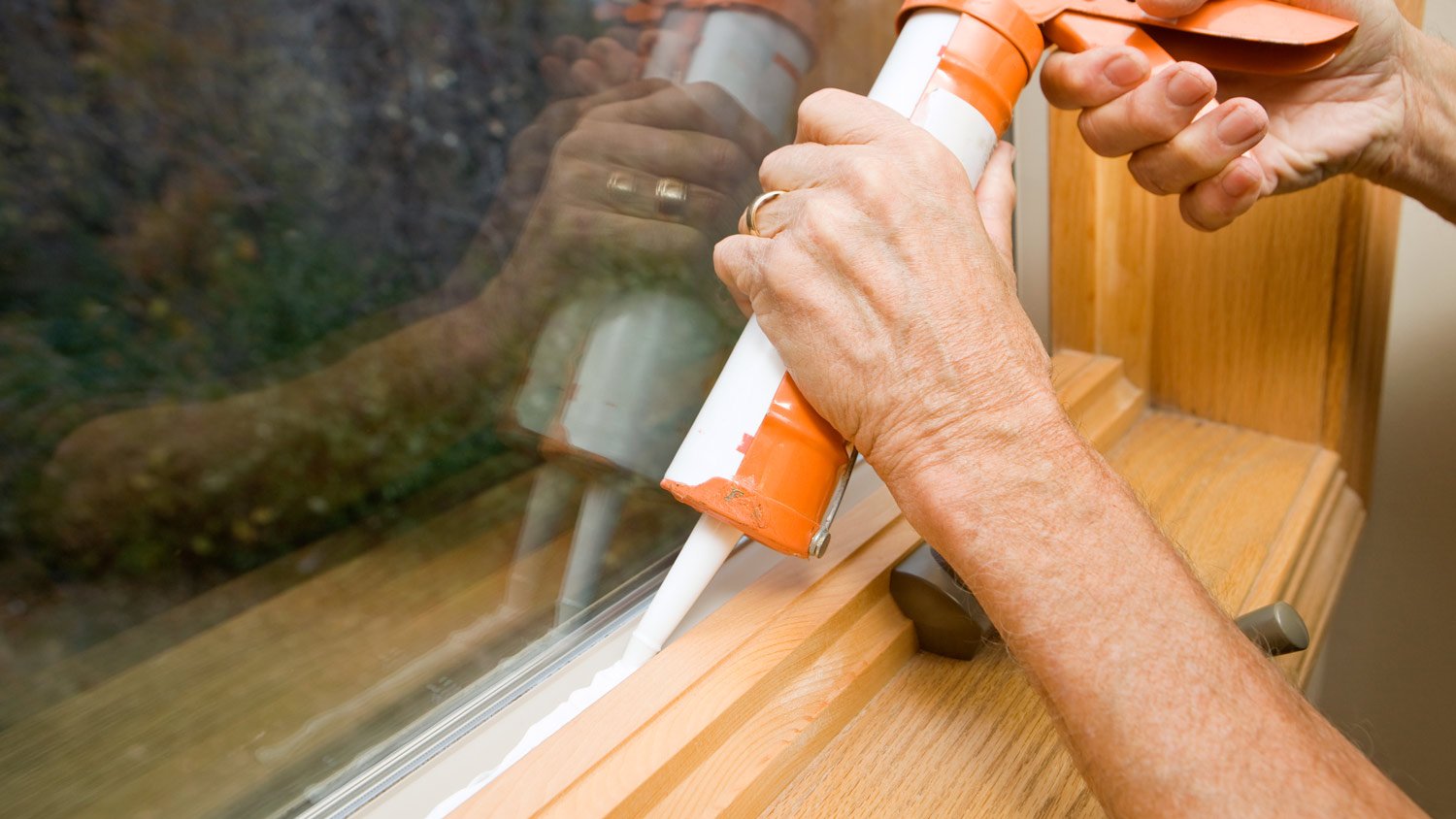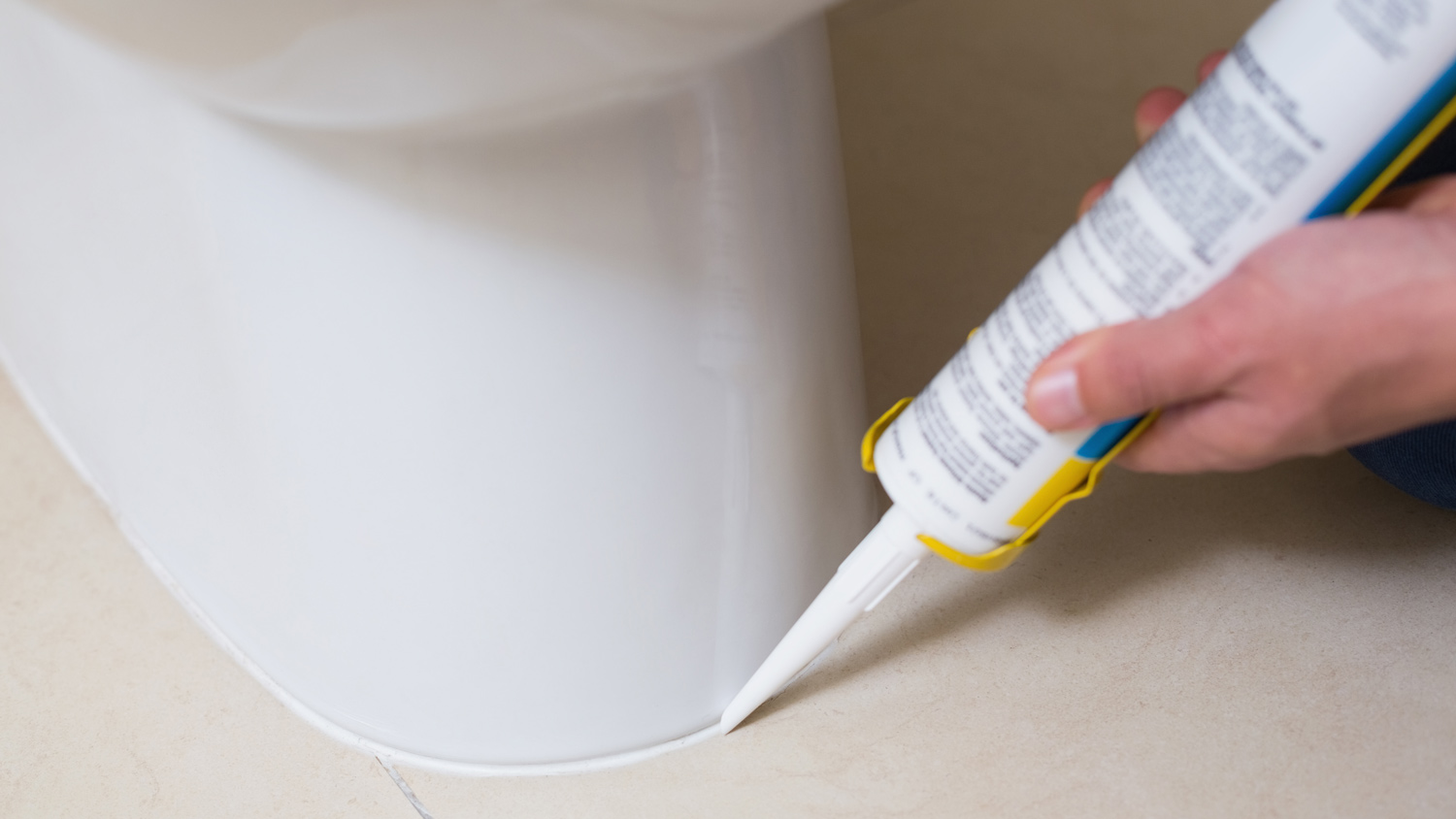
Whether it’s on your floor, walls, or shower, ceramic tile can add style to your space. So, how much does ceramic tile installation cost? Let’s break it down.
To caulk or to seal, that is the question


Both caulk and sealant help fill gaps, particularly for tiles, plumbing, or windows.
Caulk is rigid and best for indoor projects and dry areas.
Sealant is more elastic, making it great for bathrooms and outdoor spaces.
Caulk lasts 10 to 15 years, while sealant lasts up to 25 years.
Caulk costs $4 to $8 per bottle, and sealant costs $8 to $40 per bottle.
Imagine you’re admiring the beautiful new tiles in your shower after a bathroom renovation. Before you can hop in, take a hot shower, and enjoy the tiles up close, you need to seal these tiles to protect them from moisture. But what do you use: sealant or caulk? As it turns out, these two products aren’t actually the same, even if the terms are often used interchangeably. Read on for the major differences in caulk versus sealant.
The main difference between caulk and sealant is that sealant has higher elasticity, while caulk is less flexible. More elasticity means that sealant can expand to form a tighter seal, making it a great choice for high-moisture areas like tubs, showers, and plumbing. Caulk tends to be more rigid, and while it does offer some resistance to water, it works best in areas with stable temperatures because its rigid form is prone to cracking under temperature swings.

Caulk is a material that can fill gaps by drying down into a rigid line. This rigidity makes caulk highly durable, although it does have some vulnerabilities, especially to big shifts in temperature. There are many types of caulk, including acrylic latex, silicone, and butyl-rubber. Because there are many different types of caulk, this product can work in a variety of projects, from sealing gaps around door frames to finishing backsplash tiles.
| Pros | Cons |
|---|---|
| Variety of types | Vulnerable to moisture |
| Lower cost | Weak to temperature changes |
| Easy to use | Limited life span |
Best for:
Indoor projects
Dry areas
Areas with stable temperatures
Both homeowners and renters are probably familiar with caulk, and this toolbox essential can help with everything from sealing drafty door frames and windows to closing gaps where the kitchen backsplash meets the counters. Caulk is available in a wide variety of options at home improvement stores, so it’s versatile for a number of different projects.
Because it’s so widely available, caulk tends to cost less than other sealing products. It’s also easy to use, offering more precision and control during application. Caulk can be applied using a caulk gun to achieve the most even line.
Unless you opt for a hybrid caulk that combines acrylic latex and silicone, caulk tends to be vulnerable to water, humidity, and big changes in temperature. That’s why caulk works better for sealing indoor windows and door frames or tiles that aren’t near a sink or in a bathroom. Caulk also isn’t as great for outdoor projects or tubs and showers.
Because it isn’t as durable against moisture or temperature fluctuations, caulk has a shorter life span than sealant. Most people need to replace caulk every few years.

Sealant is a highly elastic material that provides more protection against moisture and drafts around your home. Sealant, often made from silicone or polyurethane, fills gaps to prevent moisture from leaking through. This product is commonly used for sealing tubs and showers, but you can also use it for plumbing or outdoor projects. It works particularly well in high-moisture areas or areas that experience many temperature fluctuations.
| Pros | Cons |
|---|---|
| Waterproof | More expensive |
| Withstands temperature changes | Harder to apply |
| Long-lasting | Harder to remove |
Best for:
Indoor and outdoor projects
High-moisture areas
Areas with stable or variable temperatures
If you’re looking to seal a tub or shower, prevent leaky plumbing, or fill gaps around gutters outdoors, sealant is the best product for the job. Sealant is flexible and elastic, so it stands up well against moisture and temperatures that rise, then fall, then rise again.
Because it’s so resistant to water and temperature, sealant is highly durable and long-lasting. Sealant may last 10 or more years longer than caulk and has a life span of up to 25 years.
Sealant’s superior waterproofing and temperature-resistant qualities also make it more expensive than caulk. Plus, because it’s so elastic—which makes it helpful in banishing moisture and adapting to temperature changes—it can be messy and challenging to install without help from a pro. In addition to being harder to apply, sealant is also more difficult to remove than caulk. You’ll need to use solvents to help loosen and remove old sealant before reapplying fresh sealant.
Ultimately, caulk and sealant serve the same purpose, which is to fill gaps and protect materials from water and drafts. However, there are some differences between these two products. Consider how caulk stacks up against sealant in the following categories:
Caulk and sealant come in a wide range of colors, from neutral tones like white or beige to bolder hues like green or blue. You can even paint over some types of caulk and sealant, particularly those made from acrylic latex. Silicone caulks or sealants are more limited in color options and cannot be painted.
Both caulks and sealants are available in a variety of options. For instance, you can find caulk made from acrylic latex, silicone, or even both mixed together. Sealant is often made with silicone, but you can also find expandable foam options made with polyurethane that are ideal for insulation and soundproofing.
Because sealant is so elastic, it has an easier time adapting to high and low temperatures. As it expands or contracts, it’s less likely to crack than more rigid caulks. The flexibility of sealant also makes it more water-resistant. These properties make sealant more durable than caulk.
By the bottle, caulk costs around $4 to $8, while sealants cost about $8 to $12 but may cost around $40 for heavy-duty sealants made for outdoor or aquatic use (such as for sealing boat decks and hatches).
Caulk is easier to apply in a steady, even beaded line. Because it is more elastic, sealant can be tricky for DIYers to apply without making a mess. Plus, sealant is harder to clean up if you do make mistakes. No matter which product you choose, hire a pro caulking service near you for the most seamless application.
Most caulk guns have a built-in tool to cut the tip of the caulk tube. Look for a hole on the handle. If there is one, you can stick the tip of the tube in the hole at an angle and squeeze the trigger to cut it open.
Repairing caulk or sealant involves removing the old sealing product and re-caulking or resealing. But because caulk is easier to remove, repairs are easier, too. You can remove caulk with a scraping tool. To remove sealant, you’ll need to use solvents to loosen and lift the material.
Caulk and sealant require the same amount of care. When cleaning caulked or sealed areas, use gentle soaps or cleaners to avoid damaging the material. Every three to five years, you’ll want to remove the existing caulk and replace it. You can often wait around 10 years for sealant, but the process is the same.
Both caulk and sealant likely need a refresh every three to five or every 10 years, but they can last longer with proper application and care. Sealant will last far longer under the right conditions. Caulk can last 10 to 15 years, but sealant’s average life span is 10 years, with some types lasting 20 to 25 years.
From average costs to expert advice, get all the answers you need to get your job done.

Whether it’s on your floor, walls, or shower, ceramic tile can add style to your space. So, how much does ceramic tile installation cost? Let’s break it down.
.jpg?impolicy=leadImage)
Sealing your grout goes a long way toward extending its life span. This guide breaks down the cost factors for sealing grout, including size, materials, and labor.

Discover the cost to regrout shower, including average prices, key cost factors, and tips to help you budget for a fresh, watertight shower.

Goodbye dingy grout, hello pristine tiles! Learn how to keep white grout clean like a pro with seven grime-busting tips.

Life happens and tiles crack. This two-method guide will show you how to fix cracked tile in as little as an afternoon—with no experience necessary.
Need help with sealing the gaps around your home? Avoid the mess by following these 10 helpful caulking tips.